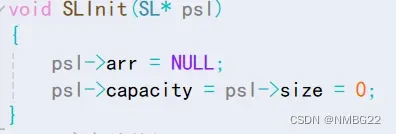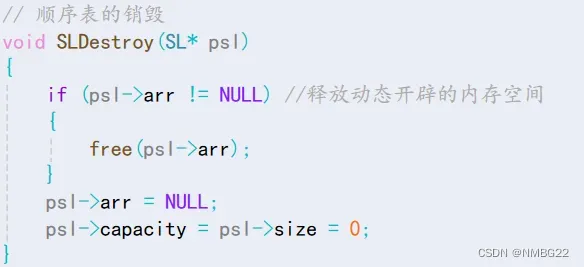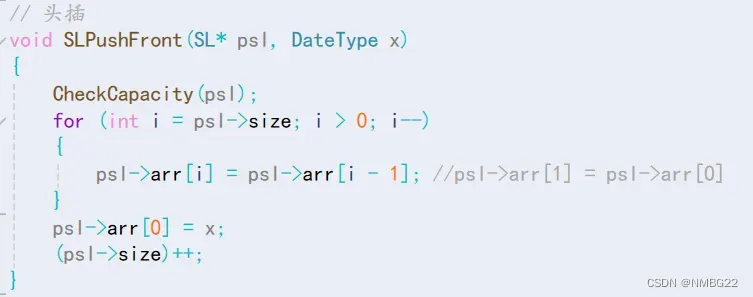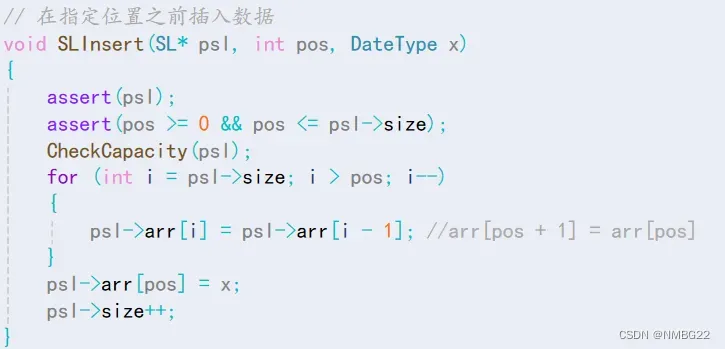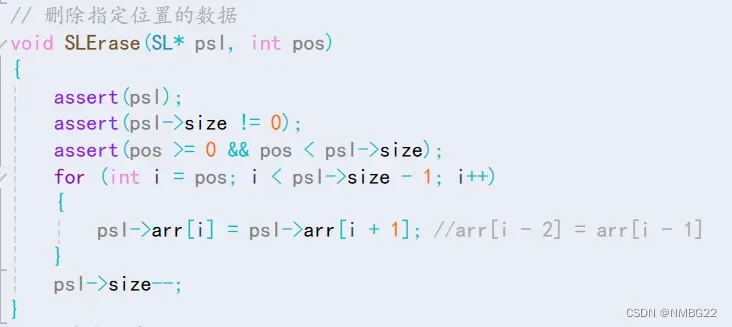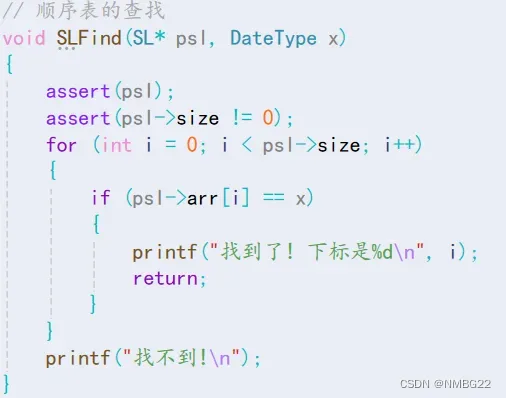目录
零.必备知识
a.顺序表的底层是数组.
b.数组在内存中是连续存放的.
c.动态内存空间的开辟(malloc,calloc,realloc).
一.顺序表的定义与实现
注:具体解释都在注释中(在代码中具体分析!)
1.1 顺序表的定义
1.2 顺序表的初始化
1.3 顺序表的销毁
1.4 顺序表容量的检查与调整(最关键的部分)
1.5 顺序表的尾插

1.6 顺序表的头插

1.7 顺序表的尾删
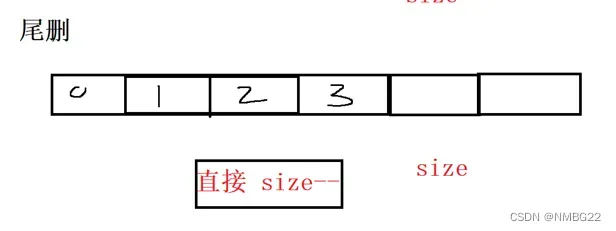
1.8 顺序表的头删
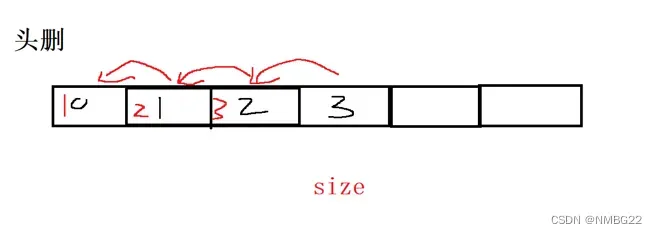
1.9 顺序表中在指定位置之前插入数据

1.10 删除指定位置的数据

1.11 顺序表中查找指定数据
二.顺序表源码
SeqList.h
#pragma once
#include <stdio.h>
#include <stdlib.h>
#include <assert.h>
静态顺序表
//struct SeqList
//{
// int arr[100];
// int size;
//};
// 动态顺序表的定义
typedef int DateType; //数据类型
typedef struct SeqList
{
DateType* arr;
int size; //数组中的有效元素个数
int capacity; //数组的总容量
}SL;
// 顺序表的初始化
void SLInit(SL* psl);
// 顺序表的销毁
void SLDestroy(SL* psl);
// 打印检查
void SLprint(SL sl);
// 容量检查与调整
void CheckCapacity(SL* psl);
// 尾插-头插
void SLPushBack(SL* psl, DateType x);
void SLPushFront(SL* psl, DateType x);
// 尾删-头删
void SLPopBack(SL* psl);
void SLPopFront(SL* psl);
// 在指定位置之前插入数据
void SLInsert(SL* psl, int pos, DateType x); //pos:点
// 删除指定位置的数据
void SLErase(SL* psl, int pos);
// 顺序表的查找
void SLFind(SL psl, DateType x);SeqList.c
#define _CRT_SECURE_NO_WARNINGS
#include "SeqList.h"
// 顺序表的初始化
void SLInit(SL* psl)
{
psl->arr = NULL;
psl->size = psl->capacity = 0;
}
// 顺序表的销毁
void SLDestroy(SL* psl)
{
if (psl->arr)
{
free(psl->arr); //释放动态开辟的内存空间
}
psl->arr = NULL;
psl->size = psl->capacity = 0;
}
// 容量检查与调整
void CheckCapacity(SL* psl)
{
if (psl->size == psl->capacity) //空间不够了,需要进行扩容
{
int newCapacity = psl->capacity == 0 ? 4 : psl->capacity * 2; //避免 psl->capacity初始容量为空
DateType* temp = (DateType*)realloc(psl->arr, newCapacity * sizeof(DateType));
if (temp == NULL) //避免因为realloc调整空间失败,而导致psl->arr中的数据被清除
{
perror("realloc fail!");
exit(1);
}
psl->capacity = newCapacity;
psl->arr = temp;
}
}
// 尾插
void SLPushBack(SL* psl, DateType x)
{
CheckCapacity(psl);
// 插入
psl->arr[psl->size] = x;
psl->size++;
}
// 头插
void SLPushFront(SL* psl, DateType x)
{
CheckCapacity(psl);
for (int i = psl->size; i > 0; i--)
{
psl->arr[i] = psl->arr[i - 1]; //psl->arr[1] = psl->arr[0]
}
psl->arr[0] = x;
(psl->size)++;
}
// 尾删
void SLPopBack(SL* psl)
{
assert(psl);
assert(psl->size); //判断是否为空
(psl->size)--;
}
// 头删
void SLPopFront(SL* psl)
{
assert(psl);
assert(psl->size); //判断是否为空
for (int i = 0; i < psl->size - 1; i++)
{
psl->arr[i] = psl->arr[i + 1]; //psl->arr[psl->size - 1] = psl->arr[psl->size - 2]
}
(psl->size)--;
}
// 在指定位置之前插入数据
void SLInsert(SL* psl, int pos, DateType x)
{
assert(psl);
assert(pos >= 0 && pos <= psl->size);
CheckCapacity(psl);
for (int i = psl->size; i > pos; i--)
{
psl->arr[i] = psl->arr[i - 1]; //arr[pos + 1] = arr[pos]
}
psl->arr[pos] = x;
psl->size++;
}
// 删除指定位置的数据
void SLErase(SL* psl, int pos)
{
assert(psl);
assert(psl->size != 0);
assert(pos >= 0 && pos < psl->size);
for (int i = pos; i < psl->size - 1; i++)
{
psl->arr[i] = psl->arr[i + 1]; //arr[i - 2] = arr[i - 1]
}
psl->size--;
}
// 顺序表的查找
void SLFind(SL* psl, DateType x)
{
assert(psl);
assert(psl->size != 0);
for (int i = 0; i < psl->size; i++)
{
if (psl->arr[i] == x)
{
printf("找到了! 下标是%d\n", i);
return;
}
}
printf("找不到!\n");
}
// 打印
void SLprint(SL sl)
{
for (int i = 0; i < sl.size; i++)
{
printf("%d ", sl.arr[i]);
}
printf("\n");
}版权声明:本文为博主作者:NMBG22原创文章,版权归属原作者,如果侵权,请联系我们删除!


